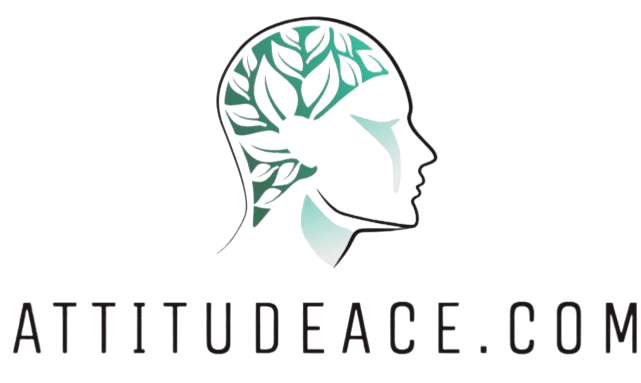How to Create a Personal Development Plan
Are you ready to unlock your full potential, both personally and professionally? A Personal Development Plan (PDP) could be the key to your transformation.
This article delves into what a PDP is and the many benefits it offers for your growth and development. It will guide you through the essential steps to craft your own plan, from identifying your goals to effectively tracking your progress.
Moreover, you’ll discover valuable tips to keep yourself motivated and accountable along the way.
Get ready to embark on an exciting journey of transformation! Let s dive in!
Contents
- Key Takeaways:
- Benefits of Having a Personal Development Plan
- Steps to Creating a Personal Development Plan
- Tips for Effective Personal Development Planning
- Frequently Asked Questions
- 1. What is a Personal Development Plan and why is it important?
- 2. How do I create a Personal Development Plan?
- 3. How do I stay motivated to achieve my goals in my Personal Development Plan?
- 4. Can I create a Personal Development Plan for both my personal and professional life?
- 5. Is it necessary to follow my Personal Development Plan exactly as written?
- 6. How often should I update my Personal Development Plan?
Key Takeaways:

- A personal development plan is a clear plan for setting and achieving goals for personal and professional growth.
- The benefits of having a personal development plan include increased self-awareness, motivation, and accountability for reaching goals.
- Creating a personal development plan involves identifying goals, making action plans, and regularly tracking progress while incorporating feedback and maintaining motivation.
What is a Personal Development Plan?
A Personal Development Plan (PDP) serves as a clear plan to help you map out your journey of personal growth and transformation. It aids you in identifying your development goals and objectives. Self-reflection is crucial, allowing you to assess your emotional well-being and psychological needs.
Your plan will typically include key components like looking at your strengths and weaknesses, goal setting, action planning, and progress evaluation. The importance of a PDP lies in its ability to provide clarity and direction, encouraging regular self-reflection that can enhance your emotional well-being.
By utilizing psychological models like Maslow’s hierarchy of needs, you can effectively prioritize your motivations and aspirations. Erikson’s stages of development can help you navigate personal challenges at various life phases. Coaching helps you build self-awareness, set attainable goals, and maintain accountability throughout your journey, ultimately fostering a stronger sense of self-efficacy and resilience.
Benefits of Having a Personal Development Plan
Embracing a Personal Development Plan opens up exciting benefits for your growth, enriching both your personal and professional journey. This process promotes ongoing improvement across multiple facets of your life.
By clearly defining your development goals and objectives, you can pinpoint opportunities for skill enhancement and cultivate effective problem-solving strategies. This intentional focus enhances your abilities and nurtures a more positive relationship with yourself and those around you.
Advantages for Personal and Professional Growth
The advantages of having a Personal Development Plan for your growth are significant, guiding you through a lifelong journey of self-improvement and accountability. By setting clear development objectives and creating an actionable plan, you gain a deeper understanding of your strengths and areas for improvement, ultimately enhancing your effectiveness.
This structured approach highlights specific skills you need to develop and nurtures a proactive mindset that encourages continuous learning and adaptability. Integrating coaching into your journey allows you to draw insights from experienced mentors, making it easier to navigate challenges and seize opportunities.
With continuous feedback, you can regularly assess your progress, enabling you to make necessary adjustments and celebrate small victories along the way. This iterative process boosts your confidence and cultivates resilience, showing that personal and professional enhancement is not merely a destination; it’s an ongoing journey of growth and transformation.
Start your personal development journey today!
Steps to Creating a Personal Development Plan

Creating a Personal Development Plan involves several key steps that lay the groundwork for self-reflection and setting goals for personal growth and development. These steps ultimately guide your personal and professional growth.
First, identify your development objectives. Then, work with a coach to gain deeper insights. Finally, create action plans tailored to your unique needs and aspirations.
Identifying Goals and Objectives
Identifying your goals is a foundational step in creating a Personal Development Plan. This process clarifies your personal development goals and highlights specific behaviors that need attention.
It emphasizes self-awareness and reflection, helping you align your aspirations with practical, achievable objectives. Consider using ways to think about yourself, like journaling or guided meditation, to gain insights into your values and motivations.
Assess your strengths and weaknesses through a method to identify your strengths, weaknesses, opportunities, and threats. This will give you a better understanding of your current situation. Recognizing patterns in your actions is also crucial as it helps identify habits that may hinder or support your progress.
Ultimately, fostering self-awareness is vital. It lays the groundwork for setting realistic and meaningful development objectives that resonate with your authentic self.
Creating Action Plans
Creating action plans is a crucial step in your Personal Development Plan journey. Here, you turn your identified goals into actionable steps for skill enhancement and personal growth.
A coaching assignment can help you pinpoint development opportunities and maintain accountability. Establishing a clear roadmap enables you to focus your efforts effectively and track your progress over time.
Break down larger aspirations into smaller, manageable tasks. This way, you can measure your success and stay motivated. Coaching is valuable because it helps you receive constructive feedback, allowing you to refine your approach.
With a structured plan, personal accountability becomes paramount. You’ll take ownership of your growth journey and make a conscious effort to meet your established goals.
Tracking Progress and Making Adjustments
Tracking your progress and making adjustments is essential for a successful Personal Development Plan. This practice keeps you on track and excited about your goals!
Regular feedback and evaluation allow you to assess your journey and tweak your action plans as needed. Engaging in reflective practices, like journaling or self-assessment questionnaires, offers insights into your personal strengths and areas needing more attention.
Seeking input from mentors or peers provides valuable perspectives that enhance your self-awareness. By actively incorporating this feedback, you can spot patterns in your behavior and refine your strategies to boost your personal effectiveness.
This iterative process of evaluation and adjustment keeps you accountable while cultivating resilience and adaptability traits crucial for long-term success in your personal development journey.
Tips for Effective Personal Development Planning

For your personal development planning to truly resonate, weave in strategies that enhance your effectiveness and sustain your motivation throughout the journey.
This means embracing effective coaching practices and setting up accountability mechanisms. These not only promote continuous self-improvement but also reinforce your commitment to achieving your personal development goals.
Incorporating Feedback and Reflection
Incorporating feedback and reflection into your personal development planning is essential for enhancing your emotional wellbeing and fostering effective coaching practices.
By regularly engaging in self-reflection, you can gain a deeper understanding of your experiences, challenges, and successes. This understanding enables you to make more informed adjustments to your development plans.
Actively seeking input from peers and mentors allows you to gain diverse perspectives that can illuminate blind spots in your growth journey. For instance, after completing a team project, engaging in a feedback session can uncover strengths and areas for improvement that may not have been immediately apparent.
Setting aside time for journaling after coaching sessions gives you the opportunity to reflect on which techniques resonated and which may need some polishing. Reflecting on your practices enriches your insights and makes you a better coach!
These practices not only enrich your personal insights but also enhance your coaching effectiveness, ensuring that you continuously evolve and adapt to meet the unique needs of your clients.
Maintaining Motivation and Accountability
Maintaining your motivation and accountability is crucial for realizing personal growth through a Personal Development Plan (PDP). This commitment keeps you aligned with your goals and equips you to navigate challenges effectively.
By harnessing coaching techniques and establishing accountability systems, you can significantly enhance your capacity to overcome obstacles and sustain your motivation over time.
To elevate your journey, consider implementing specific, measurable milestones that allow you to track your progress in real time. Engaging a coach can offer invaluable guidance and foster resilience when you encounter setbacks.
Building a network of like-minded peers can further solidify your commitment. Sharing both achievements and challenges cultivates a sense of community.
Utilizing tools like journals or dedicated goal-tracking apps can serve as constant reminders of how far you ve come, reinforcing your sense of achievement. Ultimately, these strategies work together to create a nurturing environment where your personal development can truly flourish.
Frequently Asked Questions
1. What is a Personal Development Plan and why is it important?

A Personal Development Plan (PDP) is a written document that outlines your goals, strengths, weaknesses, and actions to achieve personal growth and development. It is important because it helps you stay focused, motivated, and accountable towards achieving your goals.
2. How do I create a Personal Development Plan?
To create a PDP, follow these steps:
- Identify your goals: Think about what you want to achieve in the short term and long term.
- Assess your current situation: Evaluate your strengths, weaknesses, and skills.
- Set SMART goals: Make sure your goals are Specific, Measurable, Attainable, Relevant, and Time-bound.
- Develop an action plan: Break down your goals into smaller action steps and set deadlines.
- Monitor and review: Regularly review your progress and make necessary adjustments.
3. How do I stay motivated to achieve my goals in my Personal Development Plan?
Here are some tips to stay motivated:
- Visualize success: Imagine yourself achieving your goals and the positive impact it will have on your life.
- Find an accountability partner: Share your PDP with someone who can support and motivate you.
- Celebrate small wins: Acknowledge and celebrate your progress to stay motivated!
- Remind yourself of your why: Remember why you set these goals in the first place and let it drive you forward.
- Stay positive: Surround yourself with positive thoughts and avoid negative self-talk.
4. Can I create a Personal Development Plan for both my personal and professional life?
Yes, you can create a PDP for all areas of your life. It is important to have a balance between personal and professional development to achieve overall growth and fulfillment.
5. Is it necessary to follow my Personal Development Plan exactly as written?
No, a PDP is a flexible document that can be adjusted or modified as needed. The important thing is to stay committed to your goals and make necessary changes to your plan if needed.
Your growth journey starts now! Don t wait to take the first step!
6. How often should I update my Personal Development Plan?
Your Personal Development Plan (PDP) is a document you keep updating. It s essential to review it at least once a month to ensure you re on track.
You can also choose to review and update your PDP every few months or once a year. Regular updates help you stay focused on your goals!






